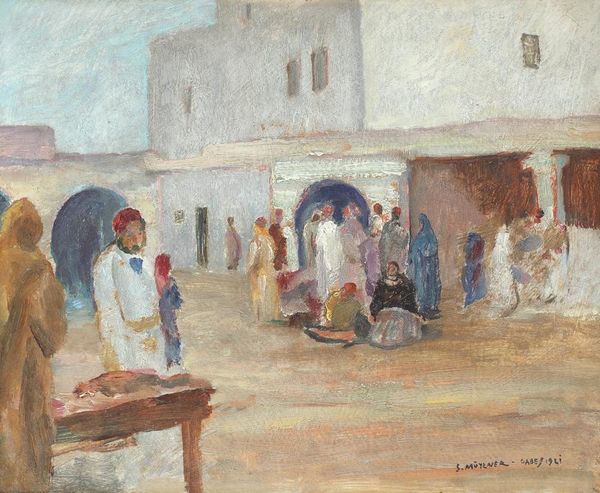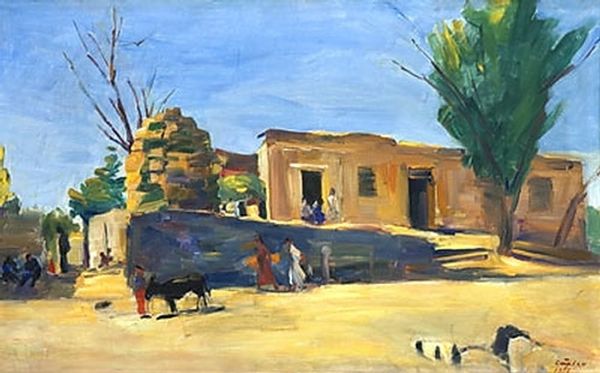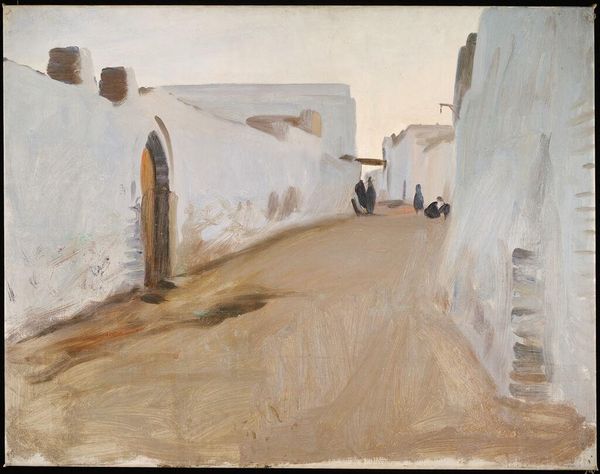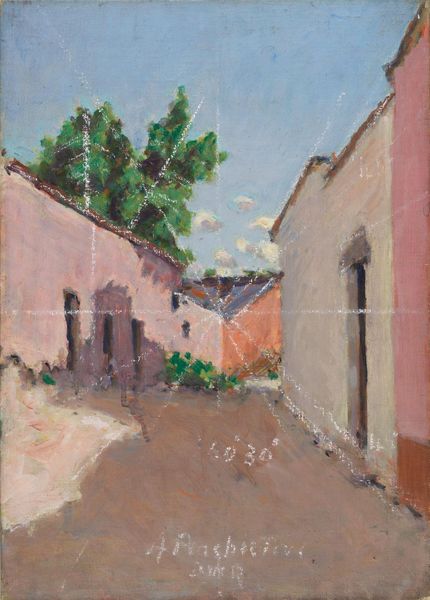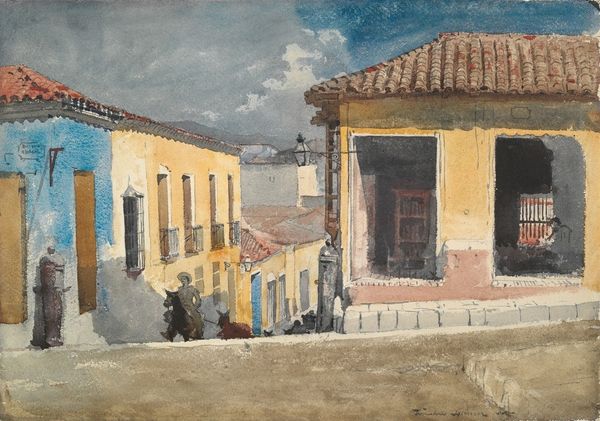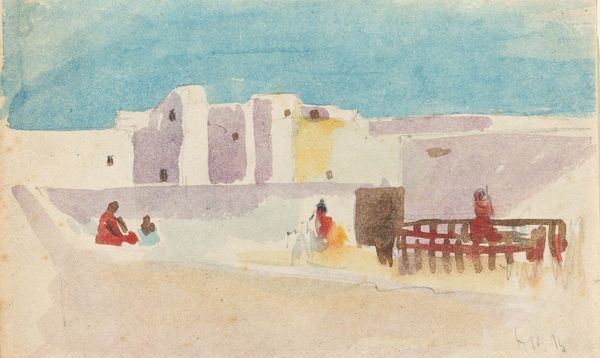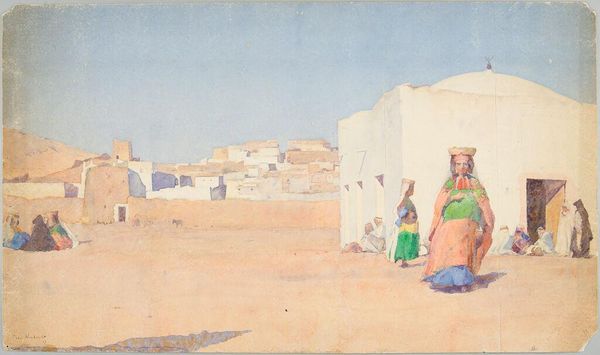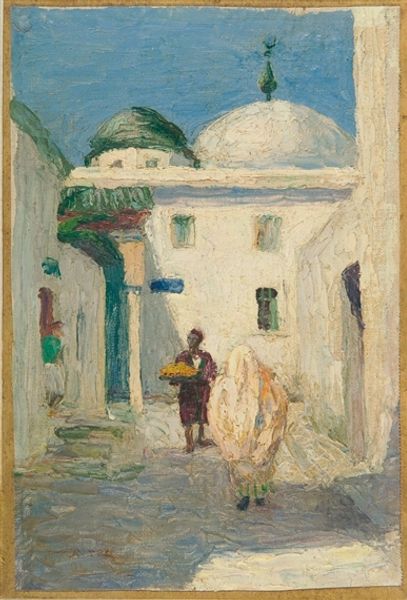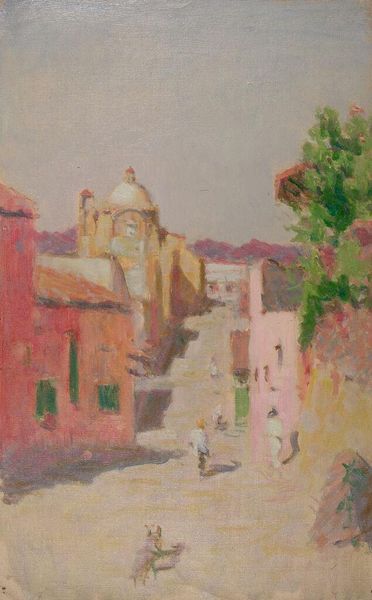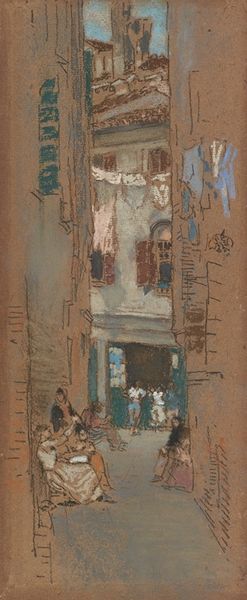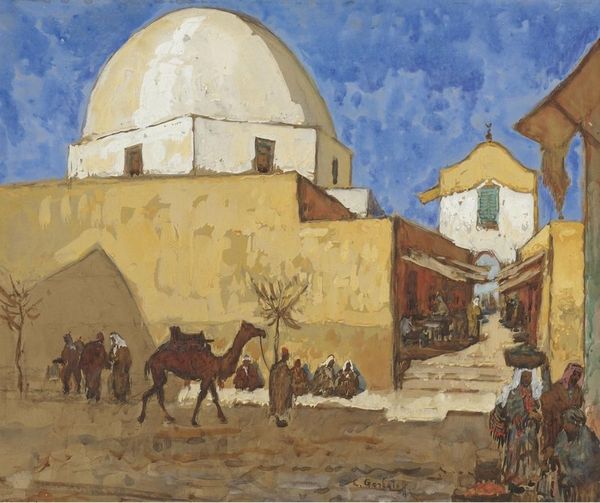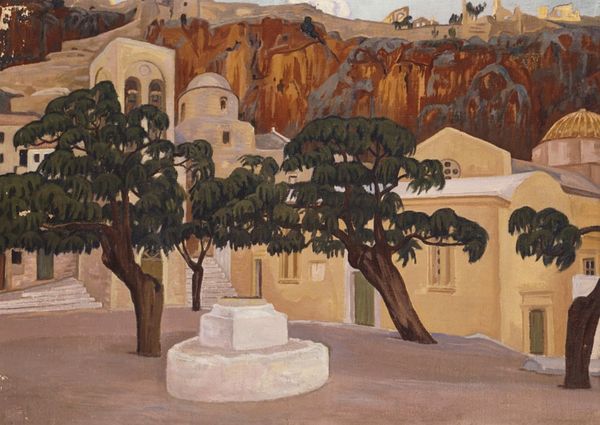
painting, oil-paint
#
painting
#
oil-paint
#
landscape
#
painted
#
figuration
#
oil painting
#
cityscape
#
genre-painting
Dimensions: 99 x 69 cm
Copyright: Public domain
Curator: Looking at this painting by Pedro Figari, called "Toque de Oración" from 1925, it strikes me first and foremost as an observation of labor and material production. Editor: It has a very naive, almost dreamlike quality about it, like a childhood memory viewed through rose-tinted glasses. Curator: Well, Figari's paintings, crafted with oil on canvas, weren't necessarily aiming for pure realism. They were, however, attempting to depict specific cultural scenes, so the context is what shapes our understanding. Note the clothing styles of the figures, typical of the period. It tells a story of Uruguayan society at that time. Editor: Absolutely, but it's not just a historical document. The rough texture, the somewhat flattened perspective… there's a real poetry in the mundane. What kind of painting surfaces did Figari use, and how might these have contributed to his aesthetic vision? Curator: Records suggest he preferred common canvases and supports readily available to working-class artists. This pragmatism allowed Figari to churn out his oeuvre more efficiently and engage in quantity. The application of paint shows broad, deliberate strokes rather than meticulous blending or layering, contributing to its distinctive texture. I also consider how the subject, supposedly a prayer gathering, intersects with material concerns like class, dress and ritual practices. Editor: Yet the mood he evokes! Look at that milky sky, the way the light softens the edges of everything. The praying ladies outside. Is it dawn? Or dusk? Dogs meandering… There’s this palpable quietude that overtakes my thoughts. It's fascinating how he combines almost caricature-like figures with that incredibly atmospheric light. The material's capacity is more symbolic. Curator: And in connecting this technique to a certain availability of resources, you’re reminded how the labor practices behind it inform the style. Figari sought a democratic aesthetic by employing inexpensive materials and an approachable representational mode to make his works accessible and to render them socially symbolic. Editor: So it is! By exploring the socio-political dimensions, he gives his own vision to material. Curator: A lens on value! Editor: Beautiful and insightful.
Comments
No comments
Be the first to comment and join the conversation on the ultimate creative platform.
